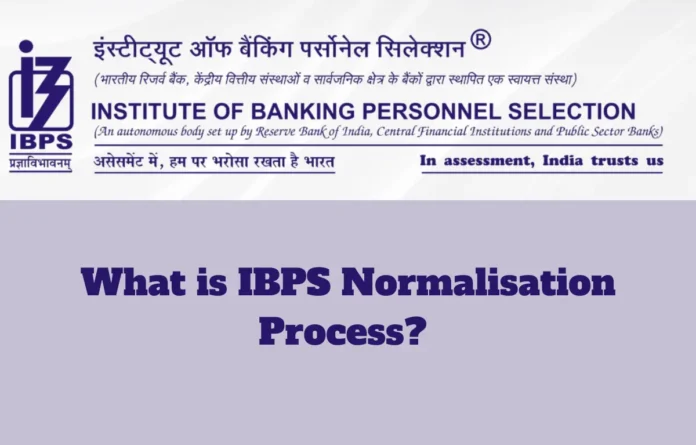The Institute of Banking Personnel Selection (IBPS) uses a normalisation process to ensure fair evaluation of candidates across multiple shifts of its exams, such as IBPS PO, Clerk, SO, and RRB, where the difficulty level of question papers may vary. Recently, IBPS has explained the normalisation process that is being followed by the organisation to prepare the results fairly, even if the tests are slightly different in difficulty. Let’s understand the Normalisation Process or Equipercentile Equating in detail.
What is IBPS Normalisation Process?
This method compares scores from different test versions (like Test A and Test B) using a tool called the Cumulative Distribution Function (CDF). It finds a score in one test that matches the same ranking (percentile) as a score in another test. For example, if you score 50 on Test A and it’s the 85th percentile, they find the score on Test B that also hits the 85th percentile. This keeps things fair no matter which test version you take.
This process balances scores so that candidates are not unfairly advantaged or disadvantaged based on the difficulty of their specific exam shift. The IBPS Normalisation process ensures all candidates are compared on a common scale, reflecting their true performance.
How Does IBPS Normalise Marks?
The equipercentile equating or normalisation process in IBPS involves a structured five-step methodology:
- Computing Score Distributions: Empirical cumulative distributions of different test forms are estimated using recruitment data.
- Pre-Smoothing Score Distributions: Log-linear models are applied to smooth score distributions, reducing statistical noise and ensuring stable estimates.
- Selecting the Base Test Session: One test session is chosen as the reference, based on the statistical properties of its score distribution.
- Matching Percentile Ranks: Each score in a given test form is mapped to its corresponding percentile rank.
- Determining Equivalent Scores: The score from an alternate test form that shares the same percentile rank in the base session is identified as the equivalent score.
IBPS Normalisation Formula
IBPS has also shared the formula for normalising marks for various IBPS exams, which are conducted in multiple shifts.
Example of IBPS Normalisation Process
- On Test A, a score of 40 is the 70th percentile, 50 is the 85th, and 60 is the 95th.
- On Test B, the same percentiles match 42, 51, and 59.
If you score 50 on Test A (85th percentile), your score on Test B would be adjusted to 51. This balances out any differences in test difficulty.
| Raw Score (A) | Percentile Rank | Equated Score (B) |
| 40 | 70th percentile | 42 |
| 50 | 85th percentile | 51 |
| 60 | 95th percentile | 59 |
